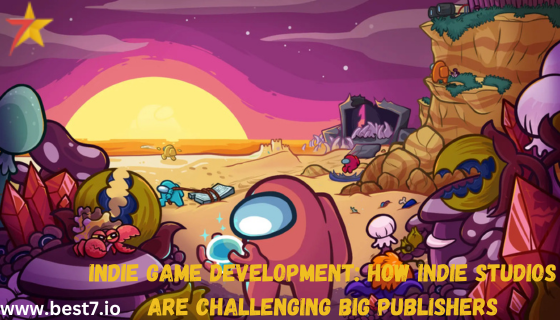
Over the past few years, the overall dynamics of the gaming industry have shifted, and indie game development has gained traction. A transformative force in the gaming industry has been associated with a sense of disruptive innovation, as small developers and independent studios were creating games that were devoid of restrictions implied by publishers. The disruptive movement that pertains to the creation of games outside the traditional bounds of the industry creates new possibilities for understanding gaming. Hence, in this case, I aim to discuss the future of gaming and explain the changes that this phenomenon may bring.
The Emergence of Indie Studios
Indie game development has come a long way and gained a tremendous load of momentum. As a result, thousands of indie studios produce games across the world. They are known for making unique storytelling and gameplay experiences that are vastly different from majority titles. The International Game Developers Association (IGDA) reports that from 2015 to 2020, the number of independent developers skyrocketed by a staggering 70%, and over the upcoming decade, the trend continues to grow.
Growing Influence of Indie Studios on the Market
The future of gaming will be associated with a massive increase in new indie studios that will cover a major part of the digital landscape. More than 40% of the global gaming markets will belong to indie games by the year 2025. The development is fueled by digital distribution access and ground-up development, as traditional game publishers will strive for creating blockbusters. Meanwhile, the new small developers will attract players with new and fresh game ideas and lore.
Advantages of Indie Game Development
The benefits of indie game development became especially clear in the course of these years as the movement gained momentum. The following points illustrate the advantages of small developers over traditional ones and explain what they will use in the future:
- Creative Freedom: As many developers were breaking…
- Impressive Audio and Visuals: Independent developers can create unique art styles and soundtracks that reflect their vision of the game they want to create, making some indie games truly stand out.
- Unique Storytelling: Independent games are more often oriented towards narrative depth and the emotional impact of the story, allowing developers to realize their ideas and create stories that can touch the player’s heart.
Grassroots Development and Community Engagement
The main advantage of indie development is that many studios try to attract as many players as possible, create communities, and engage casual gamers. Platforms like Kickstarter and Indiego have revolutionized the industry, giving the developers the ability to fund their projects through their potential players and promote them to the target audience.
Diverse Gaming Experience
The popularity and rise of indie game development will also contribute to diversifying the selection of games in general, with more diverse and revolutionary genres and titles becoming available. The improvement of digital distribution and the rise of different platforms like Steam or itch.io have allowed developers to cut costs on production while accessing a vast pool of international players without the need for publishing agreements.
Challenges for Indie Developers
In conclusion, many success stories have already demonstrated the potential of indie projects. However, certain obstacles will emerge as part of the international development process of small developers, such as:
- Resource Constraints: Most small developers operate on relatively limited budgets, which can restrict the types of projects they can undertake.
- Market Saturation: The growth of indie games translates into an absolute increase in yearly output, challenging young developers to distinguish their creations.
- Developmental Constraints: Independent developers on smaller teams may face a variety of development hurdles, making game design, programming, and quality control more challenging.
Future of Indie Game Development and Market Trends
With the evolution of the gaming industry, indie game development will become a major driving force of its future. The diversity and creativity of independent studios will further enrich their market by offering players outside-the-box gaming experiences. Some key trends include:
- Market Growth: The indie game market is projected to grow at a CAGR of 15%, reaching a value of about $3 billion by 2025.
- Increasing Digital Presence: By 2026, more than half of all gamers will play indie titles regularly, reflecting increased market relevance.
- Crowdfunding: The propensity for crowdfunding will continue to grow, with approximately 70% of indie projects using this method by 2025.
Conclusion: A Bright Future for Indie Game Development
The gaming industry is being disrupted by the rise of indie game development, which promotes creative storytelling and unique gameplay experiences. An exciting future awaits as independent voices gain prominence, driving innovation and influencing the gaming landscape for years to come.












